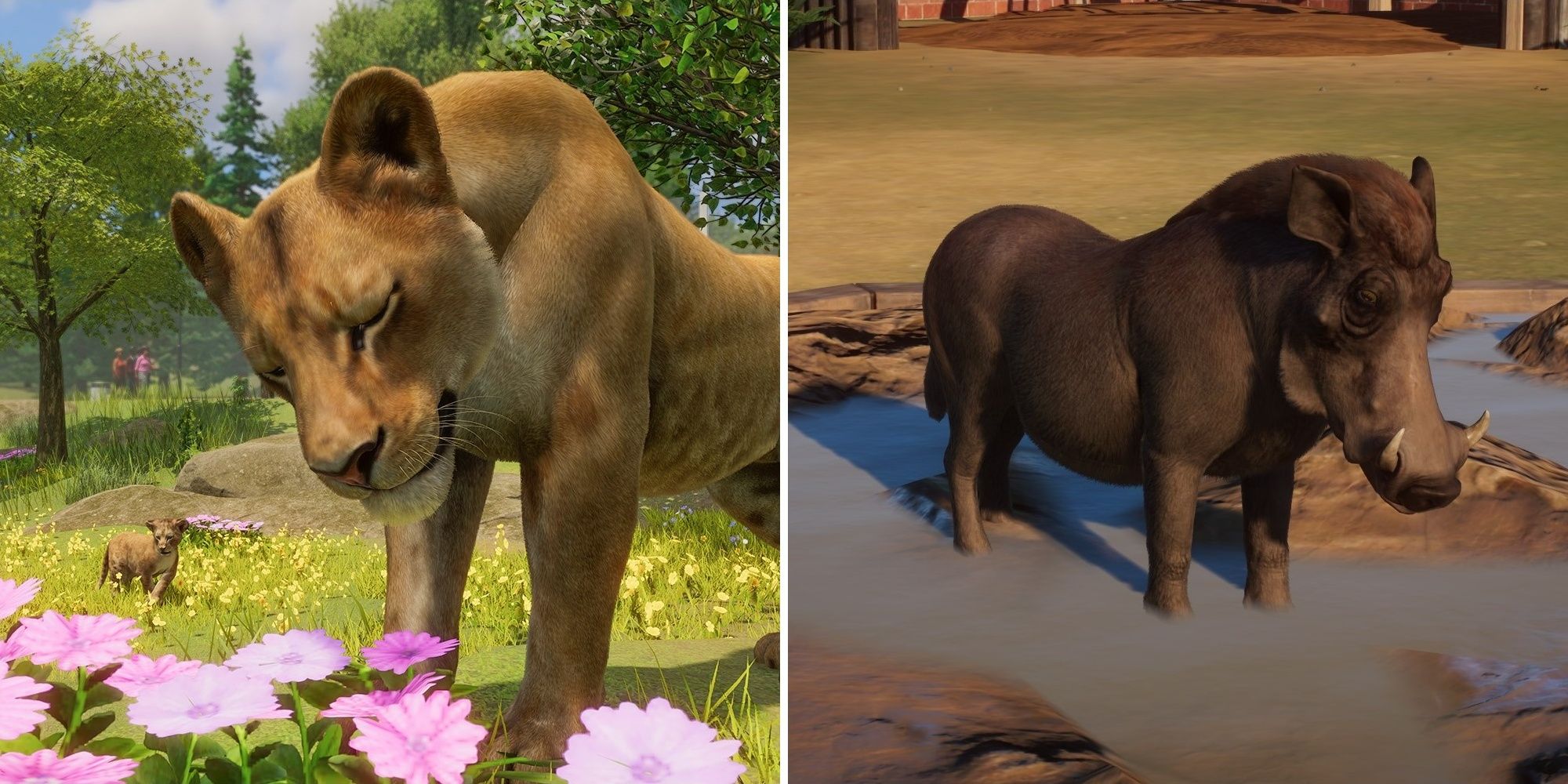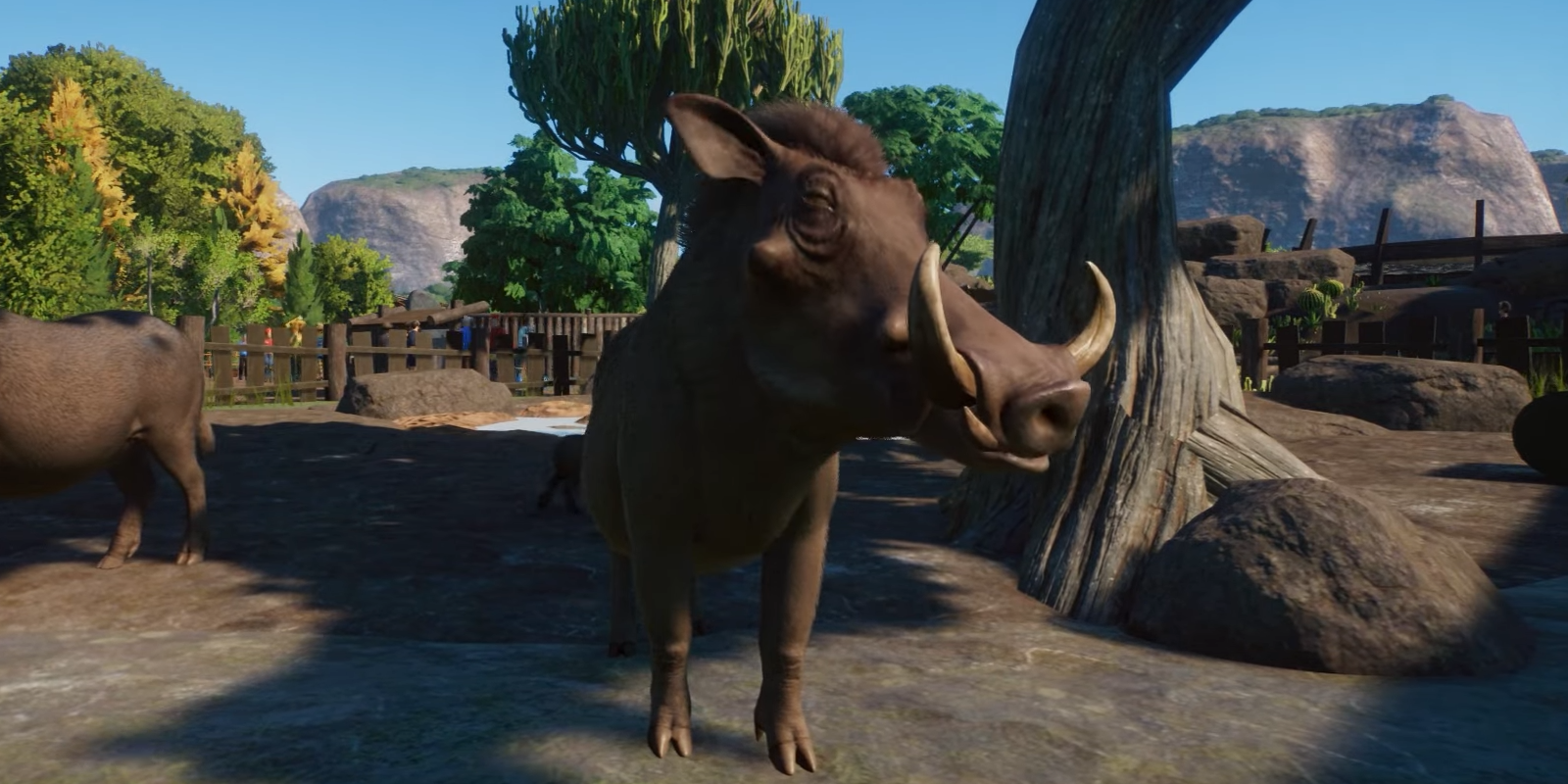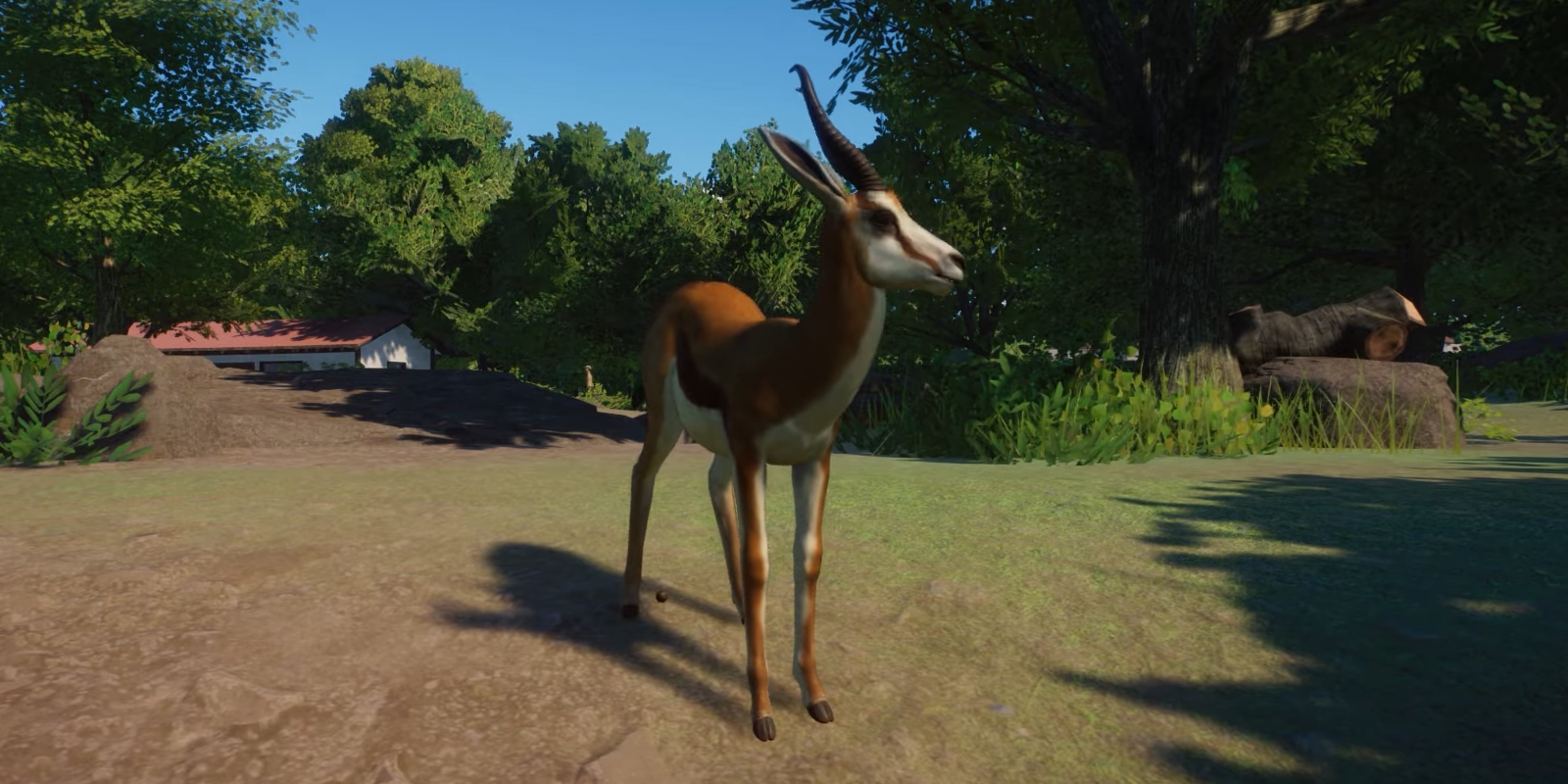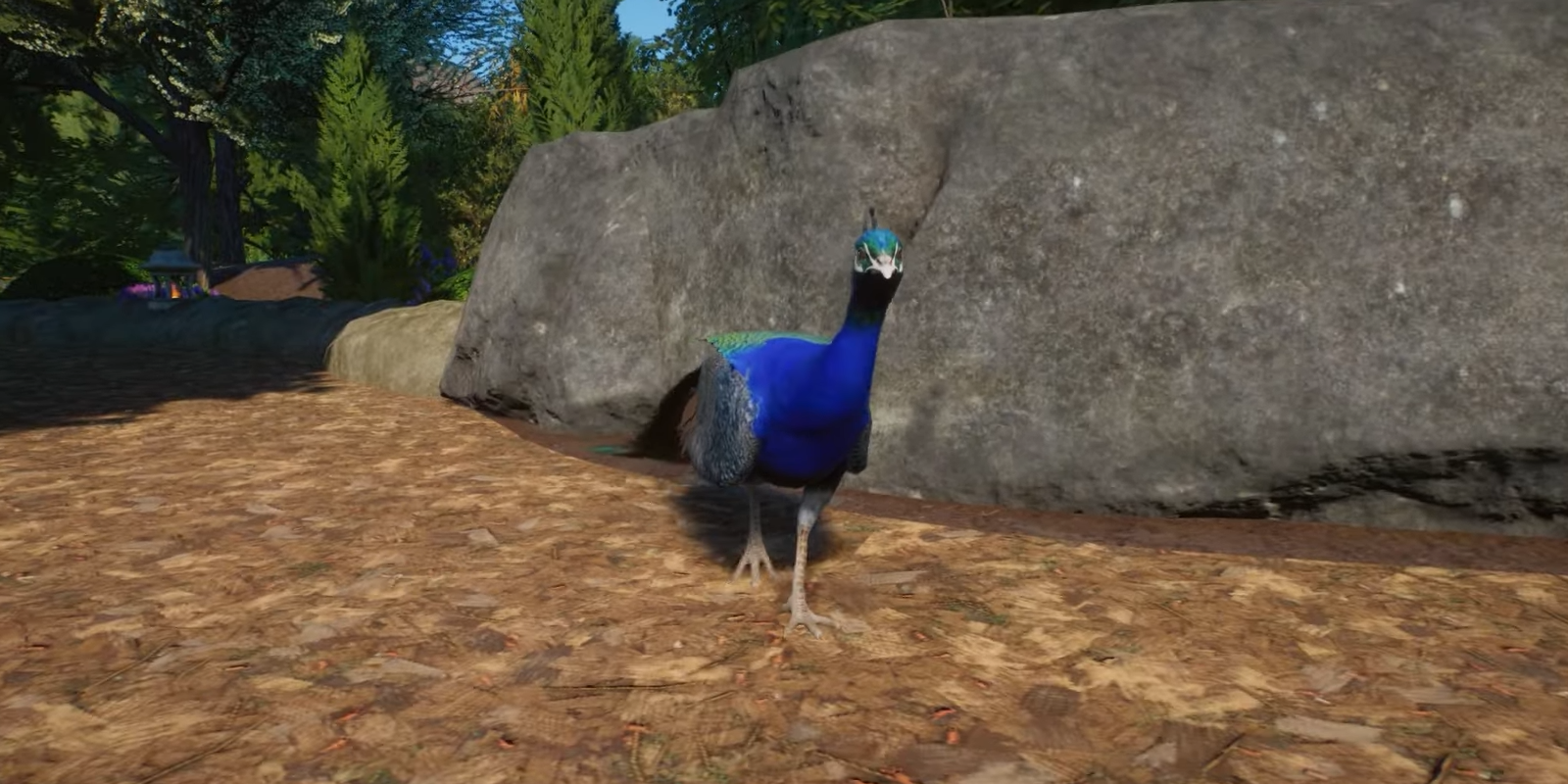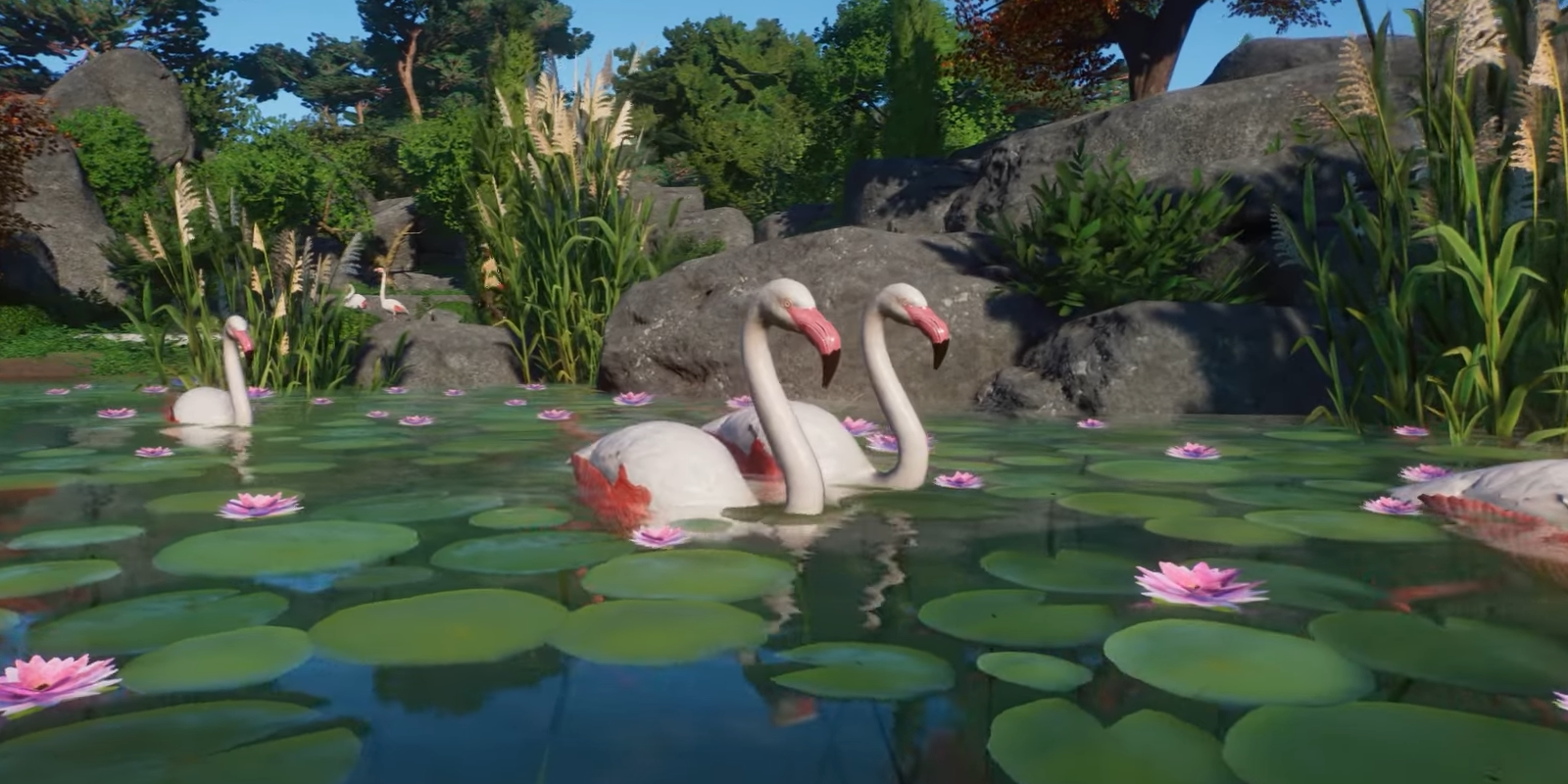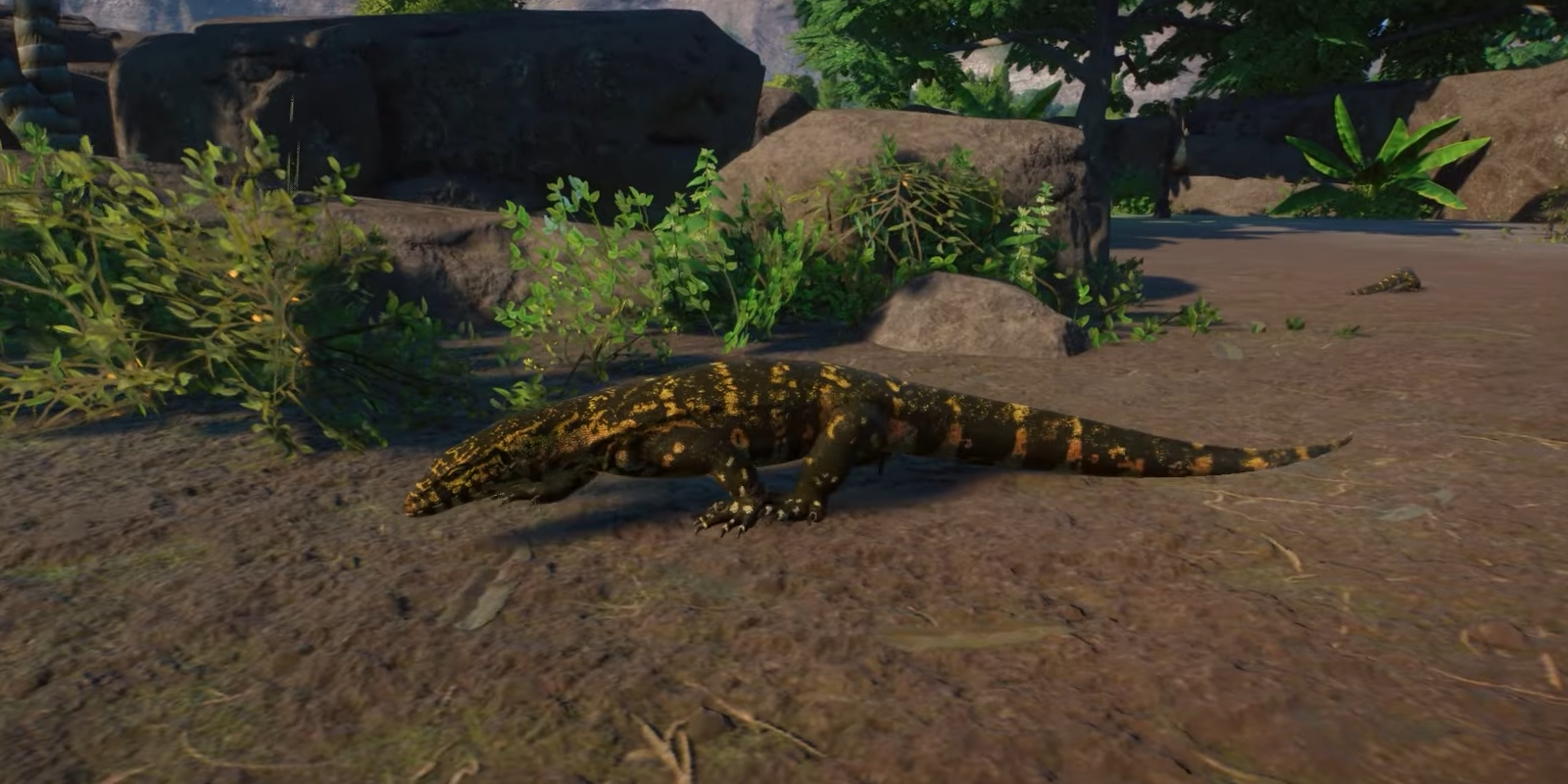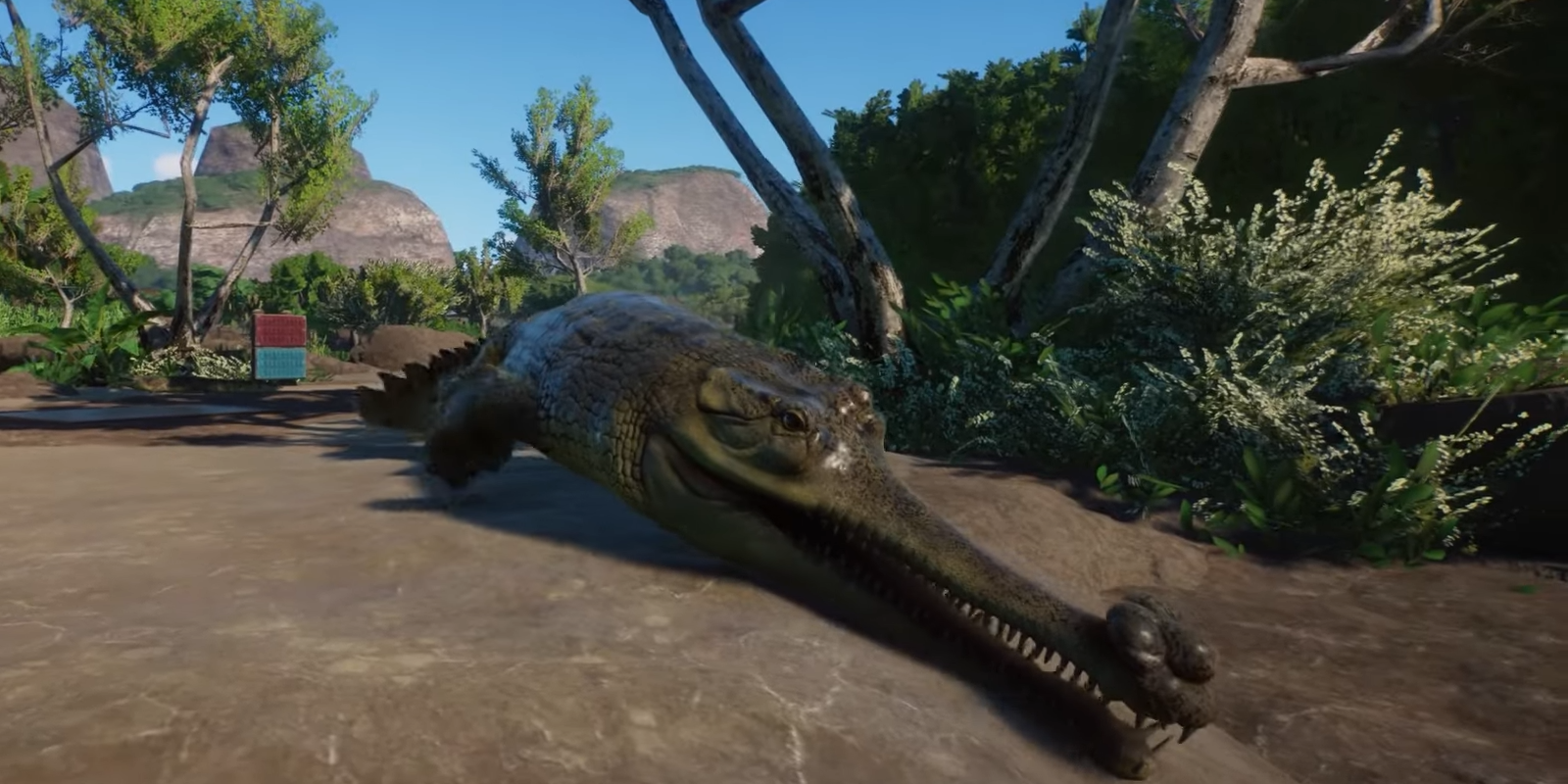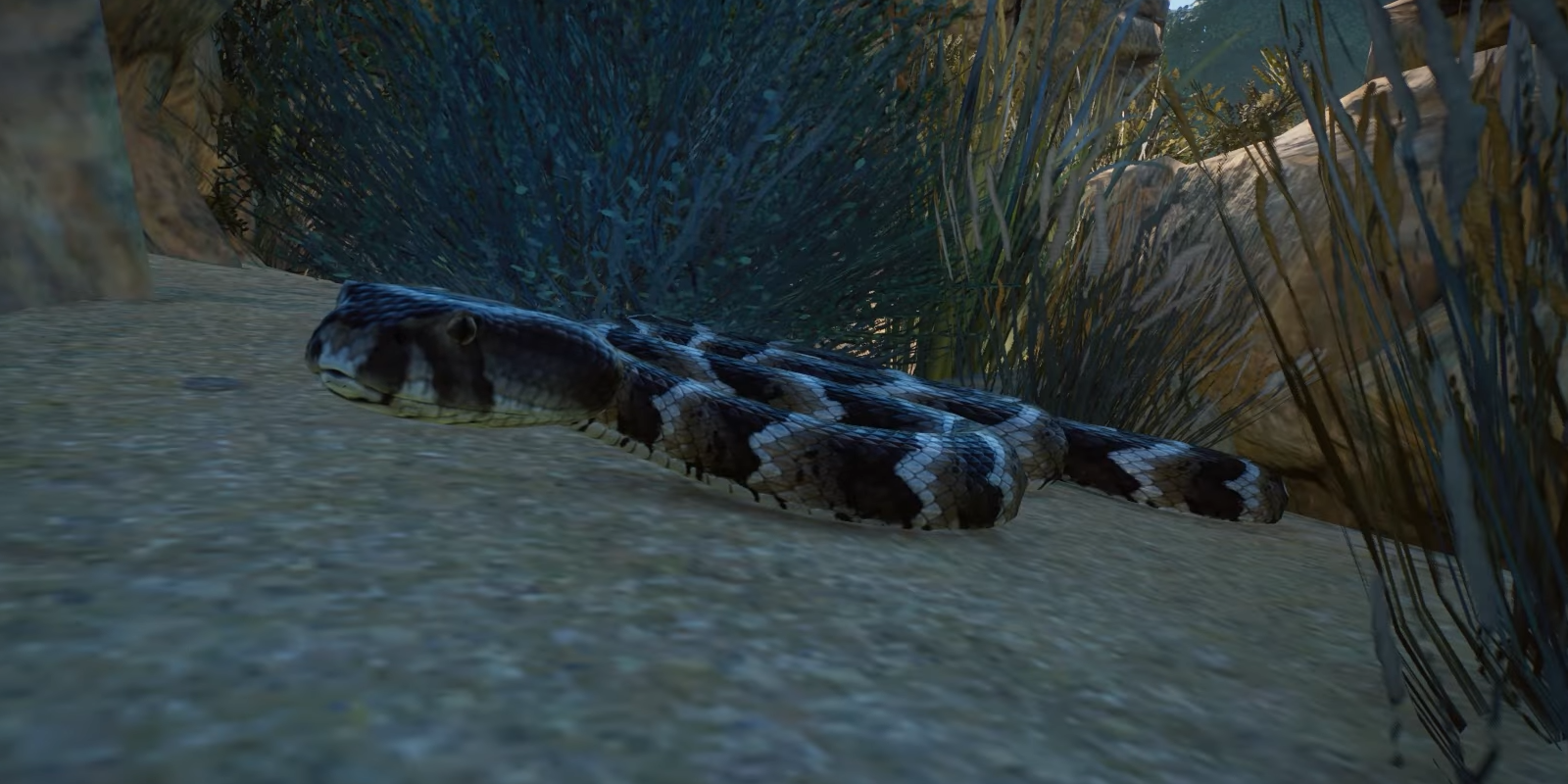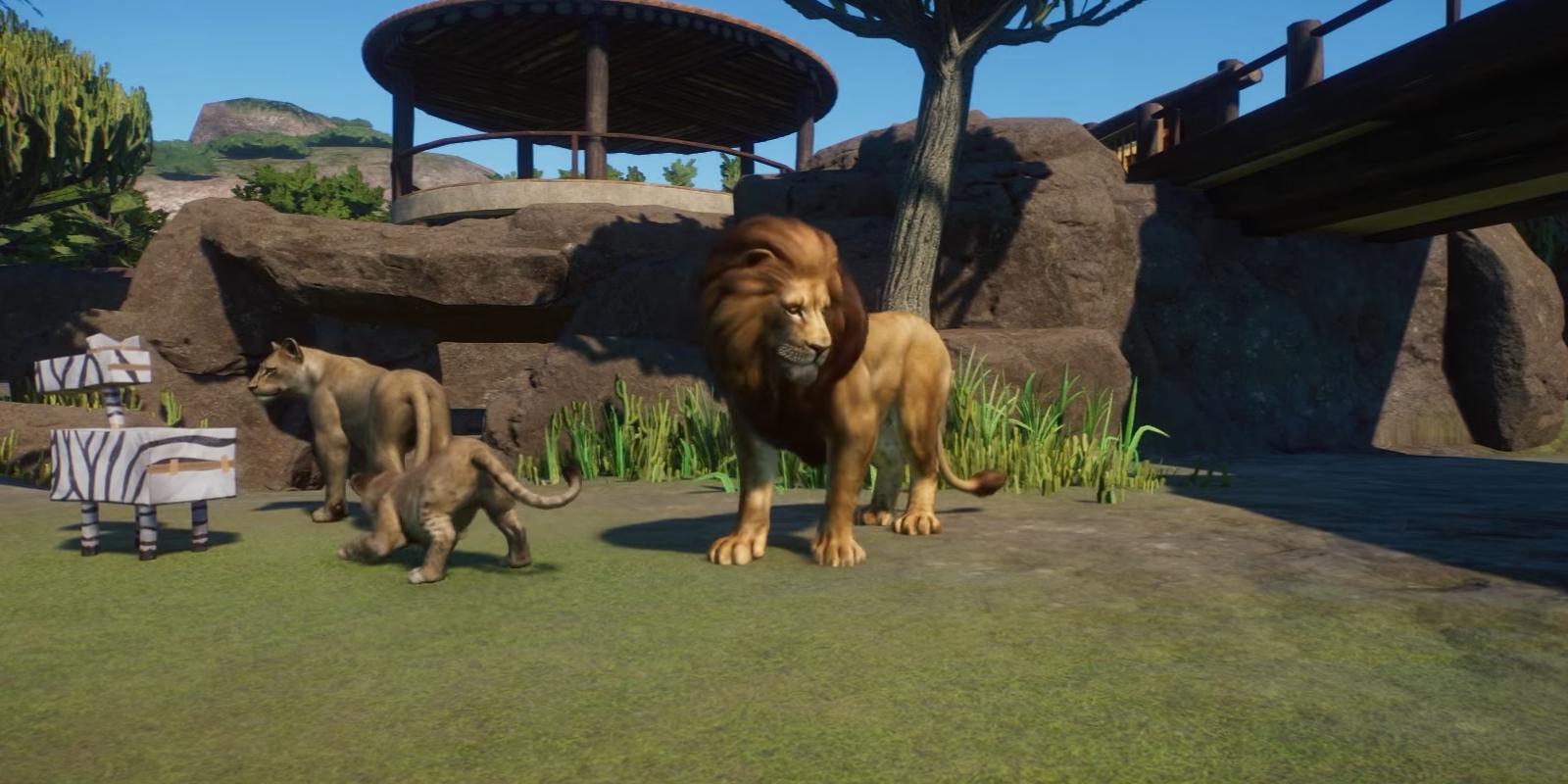Following on from Frontier’s highly acclaimed theme park simulator Planet Coaster, Planet Zoo takes the formula and puts a distinct natural spin on it. Instead of designing roller coasters and queuing lines, players are tasked with designing animal enclosures and managing which species to include and which to release or sell.
Starting a zoo can be difficult for beginners. Players need to attract paying guests to the park while also ensuring their animals remain happy and zookeepers have maintenance under control. Inevitably, some species will be easier to care for than others. Here are the best animals to get as soon as possible in Planet Zoo.
8 Common Warthogs
Being featured in the game’s tutorial, it’s no surprise that warthogs are a good beginner species. They are cheap, ideal for when the player is strapped for cash early on, and easy to maintain, meaning fewer zookeepers needed to clear up after them.
Their habitat needs are quite limited, meaning an enclosure can be set up quickly to start earning money for the zoo. Warthogs also reproduce quickly and have large litters, which serves to either expand the populace or be released/sold for conservation credits. For these reasons, they are the perfect animal to get started with.
7 Springboks
A type of antelope, Springboks are useful because they work so well with Warthogs. Interspecies enclosures in Planet Zoo allow certain species to mix in the same enclosure, making more efficient use of space while also increasing the guest popularity of that area.
This can only be done with species that are compatible with each other, and Warthogs and Springboks make an ideal early-game mix. Springboks are also just as cheap and easy to maintain as Warthogs, and reproduce relatively quickly.
6 Indian Peafowl
Better known as peacocks, Indian Peafowls breed exceptionally fast. They have many offspring at once, and their sheer rate of reproduction means their population will skyrocket. This helps bring in more guests to the zoo and therefore provides more cash for expansion.
Of course, the population can quickly get out of hand and overwhelm zookeepers, so players should keep an eye on their peacocks and release or sell some of them if they become too numerous. Peacocks also aren’t dangerous, meaning guests can walk through their enclosure without trouble, providing a nice interactive feature to the player’s zoo.
5 Greater Flamingo
Graceful and pink, Greater Flamingos are similar to peacocks in that they breed very fast and their population must be controlled to avoid swamping zookeepers in their waste. Unlike peacocks, they are high maintenance and require an enclosure with lots of space to strut around in.
That being said, Greater Flamingos provide an excellent way to stock up on conservation credits early on, as players can simply release or sell their numerous offspring. Players simply need to ensure their flamingos don’t inbreed, as this will slash conservation credits massively.
4 Nile Monitor
Cheap and low maintenance, Nile Monitors are lizards that make an easy and stress-free addition to the player’s zoo. They don’t require a lot of space or attention, and have decent appeal for their value, bringing plenty of guests into the park.
Their hatchlings sell for a decent amount of conservation credits, and while they can have multiple at one time, they don’t breed very fast, so players won’t get inundated with lots of babies. As a result, Nile Monitors are great animals to simply place down and forget about, as they won’t cause the player many problems.
3 Gharials
Gharials are essentially crocodiles, and despite their danger to humans and other animals, they are quite peaceful to each other in large groups. This means that even if the enclosure becomes overpopulated, they won’t fight, meaning fewer injuries and less expensive trips to the vet.
They can lay up to 50 eggs at a time, and while each one sells for a few conservation credits, the grand total builds up due to the sheer amount of eggs. Just like the Nile Monitors, Gharials are low maintenance, and players can more or less leave them alone after setting up their enclosure.
2 Snakes
Exhibits are a way to showcase some of the smaller creatures in the animal kingdom. While they may cost a few thousand to install, they take up a limited amount of space and are highly popular and profitable with guests.
Snakes, such as the Puff Adder, are usually the best animals to house in exhibits as they have the best appeal and a long life span. This gives them plenty of opportunity to breed, meaning they will continually generate conservation credits as long as they have access to a mate.
1 West African Lions
West African Lions, and various other species such as Bengal Tigers, are a great way to boost both income and conservation credits. They have a very high appeal, and will bring in tons of guests who in turn will spend money and make donations, increasing the profitability of the park.
They also reproduce quickly, and earn lots of conservation credits after being sold or released. Despite this, Lions should only be acquired after the park has garnered a steady income, as their food and maintenance are expensive. However, if players have the money for them, Lions are the perfect animal to propel a starting zoo all the way to a highly successful park.
Planet Zoo is available for Windows.




